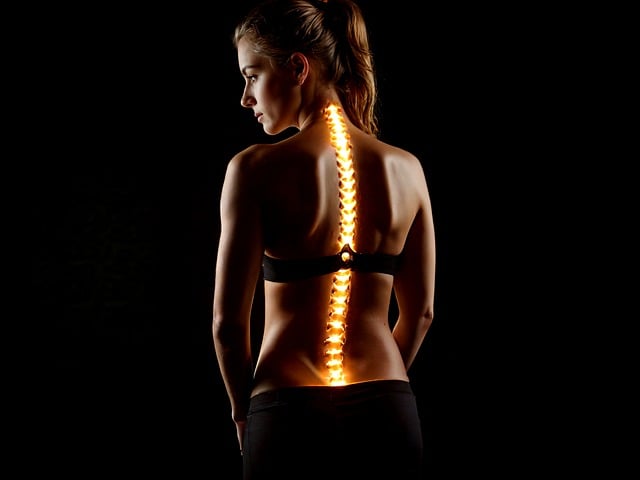Cold therapy, encompassing methods like ice packs, cold water immersions, and cryotherapy, offers a natural and powerful solution for migraine management. By constricting blood vessels, reducing inflammation, and interrupting pain signals, these cooling techniques soothe the intense throbbing associated with migraines. Simple applications of cold compresses to specific areas can provide immediate relief, while alternative methods like cold showers or pool dips have proven effective in calming neural activity linked to migraines. Integrating these cooling strategies into post-migraine care routines empowers individuals to take control, offering significant pain reduction and improving overall quality of life for those affected by this debilitating condition.
Cold Therapy for Migraines: Unlocking Natural Relief and Prevention Strategies
Migraines, characterized by intense throbbing pain and debilitating symptoms, affect millions worldwide. While traditional treatments offer some relief, they often come with limitations and side effects. This article delves into the science behind migraines and explores cold therapy as a powerful, natural alternative. We uncover the immediate benefits of cold on pain signals and inflammation, providing practical guides on ice pack application, cold water immersion, and cryotherapy. Additionally, we offer proactive strategies for migraine prevention by integrating cooling techniques with lifestyle changes, dietary adjustments, and stress management. Discover how these holistic approaches can provide lasting relief and transform your relationship with migraines.
# Cold Therapy for Migraines: Unlocking Natural Relief and Prevention Strategies
Cold therapy has emerged as a powerful and natural approach to alleviating post-migraine symptoms and preventing future episodes. The application of cold, whether through an ice pack or cryotherapy sessions, can provide significant relief for migraine sufferers. This technique works by constricting blood vessels in the brain, reducing inflammation, and interrupting pain signals, ultimately soothing the intense throbbing associated with migraines.
For immediate migraine relief, applying a cold compress to the forehead, temples, and neck areas can offer fast-acting comfort. Alternatively, immersing oneself in cold water, such as a cool shower or a short dip in a chilled pool, has been shown to induce vasoconstriction, helping to calm the brain’s overactive neural activity linked to migraines. Integrating these simple yet effective cooling techniques into post-migraine care routines and even as preventive measures can empower individuals to take charge of their migraine management.
1. Understanding Migraine Pain and its Impact
Migraines are intense, debilitating headaches that affect millions worldwide, significantly impacting daily life and productivity. These episodes can be triggered by various factors, including hormonal changes, certain foods, stress, or environmental stimuli. The pain associated with migraines is often described as a throbbing or pulsating sensation, accompanied by nausea, sensitivity to light and sound, and sometimes even visual disturbances. The impact extends beyond physical discomfort, causing emotional distress, fatigue, and difficulty concentrating, which can further exacerbate the overall quality of life for sufferers.
Cold therapy has emerged as a promising approach to managing and preventing migraines. Techniques such as applying an ice pack to the forehead, using cold water immersion, or undergoing cryotherapy involve exposing the body to extreme cold. The benefits of these cooling techniques are multifaceted; they help constrict blood vessels, reducing inflammation and pain signals sent to the brain. Additionally, cold therapy can aid in relaxing muscles, which is particularly effective for tension-type headaches often associated with migraines. By employing these simple yet powerful methods, individuals may find significant relief from migraine pain and develop an effective tool for self-care and prevention strategies.
– Delve into the science behind migraines, explaining their causes and symptoms.
Migraines are a complex neurological disorder characterized by recurrent moderate to severe headaches. They are often described as pulsating or throbbing pain, accompanied by nausea, sensitivity to light and sound, and sometimes aura—a temporary disturbance in vision or sensation. While the exact causes of migraines remain somewhat mysterious, research suggests they involve a combination of genetic predisposition, environmental triggers, and changes in brain activity and blood vessel function. Hormonal fluctuations, stress, certain foods, lack of sleep, and even weather changes are known to precipitate these intense episodes.
Understanding the mechanisms behind migraines opens the door to various treatment options, including innovative approaches like cold therapy. Techniques such as applying ice packs, immersing oneself in cold water, or utilizing cryotherapy chambers have gained attention for their potential benefits in migraine relief and prevention. Cooling techniques work by narrowing blood vessels, reducing inflammation, and slowing nerve impulse transmission, thereby lessening pain intensity and duration. Incorporating these simple yet effective methods into self-care routines could offer a non-pharmacological solution for managing migraines, providing an additional layer of support alongside traditional treatments.
– Highlight the traditional treatment options and their limitations.
Traditional treatment options for post-migraine recovery often include over-the-counter or prescription medications aimed at reducing inflammation and pain. While effective, these methods can come with side effects and don’t always address the root causes of migraines. Many sufferers are now turning to alternative therapies, particularly cold therapy, as a natural and potentially more beneficial approach.
Cold therapy for migraines involves applying cooling techniques like ice packs, cold water immersions, or cryotherapy sessions. The benefits of cold compresses for headaches are well-documented; they help constrict blood vessels, reducing inflammation and pain associated with migraines. This non-invasive method offers a safe and accessible way to manage migraine pain relief without relying heavily on pharmaceuticals.
Cold therapy emerges as a promising natural solution for post-migraine recovery and preventive care. By employing strategies such as applying ice packs, engaging in cold water immersion, or even utilizing cryotherapy, individuals can experience significant relief from migraine pain and reduce the frequency of attacks. These cooling techniques offer an alternative approach that complements traditional treatments, providing much-needed respite for those suffering from this debilitating condition. Incorporating cold therapy into a comprehensive migraine management plan holds great potential for improved quality of life.
